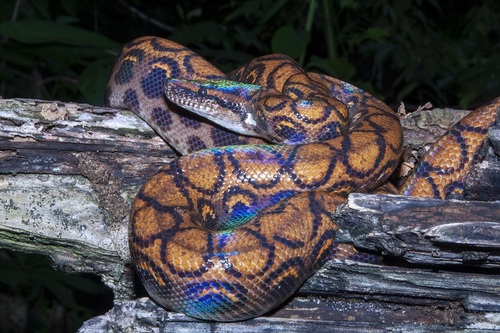
Rainbow Boa
The Rainbow Boa's iridescent scales gleam in rainforests, where it thrives as a stealthy constrictor. This Central and South American snake's vibrant shimmer and ecological role in rodent control make it a captivating marvel of the jungle.
20 years
Lifespan
Length: 1.2192 - 1.8288 m
Size
Brown, Red, White, Black-Brown
Color
Least Concern
Conservation Status
Stable
Population Trend
Characteristics
Epicrates cenchria, commonly known as the Rainbow Boa, is renowned for its iridescent scales that shimmer with a spectrum of colors. Found in the humid rainforests of Central and South America, this non-venomous snake is a skilled constrictor, preying on small mammals and birds. Its habitat preference includes dense, moist environments where it plays a crucial role in controlling rodent populations.
Distribution Range of the Rainbow Boa
Epicrates cenchria, commonly known as the Rainbow Boa, is native to Central and South America. This species is primarily found in countries such as Brazil, Colombia, Venezuela, Guyana, Suriname, French Guiana, and parts of Peru and Bolivia.
Rainbow Boa's Habitat
Environmental Conditions
The Rainbow Boa inhabits a variety of environments, but it is most commonly associated with humid, tropical rainforests. These regions are characterized by high humidity and temperatures, dense vegetation, and abundant water sources such as rivers and streams. The environmental conditions are typically warm, with temperatures ranging from 75°F to 85°F (24°C to 29°C), and humidity levels often exceeding 70%.
Ecological Niche
Rainbow Boas are primarily terrestrial but are also known to be semi-arboreal, often found in areas with dense foliage that provides cover and hunting opportunities. They play a crucial role in their ecosystem as predators, feeding on a variety of prey including mammals, birds, and occasionally amphibians. Their preference for humid environments makes them well-suited for life in tropical forests, where they can utilize their distinctive iridescent scales to blend into their surroundings and avoid predators.
Copyright @ Nature Style Limited. All Rights Reserved.
 English
English